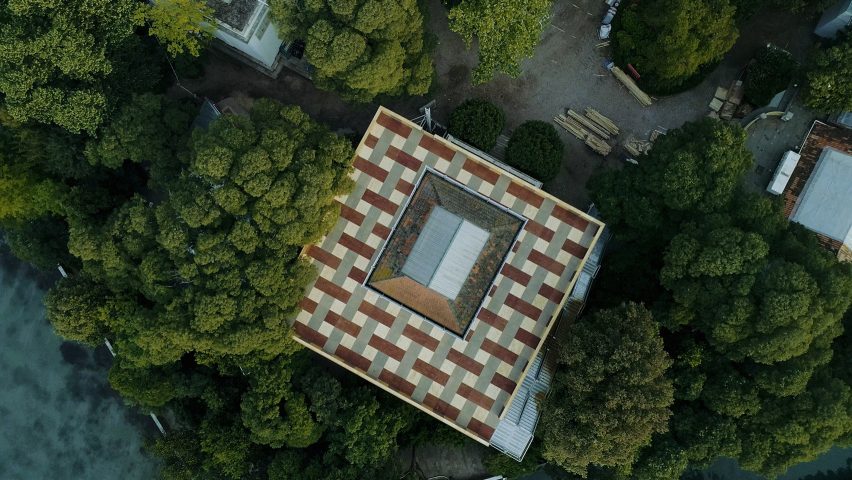
Caruso St John builds rooftop "island" above British Pavilion to make statement about Brexit
Architecture firm Caruso St John and artist Marcus Taylor have installed a huge platform atop the UK's Venice Architecture Biennale pavilion, to create a " place of both refuge and exile".
The curators chose to build scaffolding all around an empty British Pavilion, to support the wooden "island" perched on top.
The claim the project, called Island, is intended to address many topics, including colonialism and climate change. But, according to Caruso St John co-founder Peter St John, Brexit was one the driving force behind the concept.

"It doesn't feel like something that you could do at any other time than the year before we're leaving the European Union," he told Dezeen.
The platform is deliberately simple in design. Square in plan, it features a patterned surface that recalls the impressive tiled floors of Italian palazzos.
The tip of the pavilion roof pokes up through the centre, like the mast of a drowned ship might extend above the water's surface.

The space will host a series of events, debates, installations and performances over the coming months, addressing a range of themes. St John said he hopes it will create a place for people to reflect on the current situation, but also to think optimistically about the future.
"There is the idea that covering the building this very Empire-style building in scaffolding does suggest a period of hiatus, a period of self-criticism and re-assessment," he said.
"It's supposed to be about many issues, and these will be discussed in conferences and events that will happen on the platform and in the pavilion."
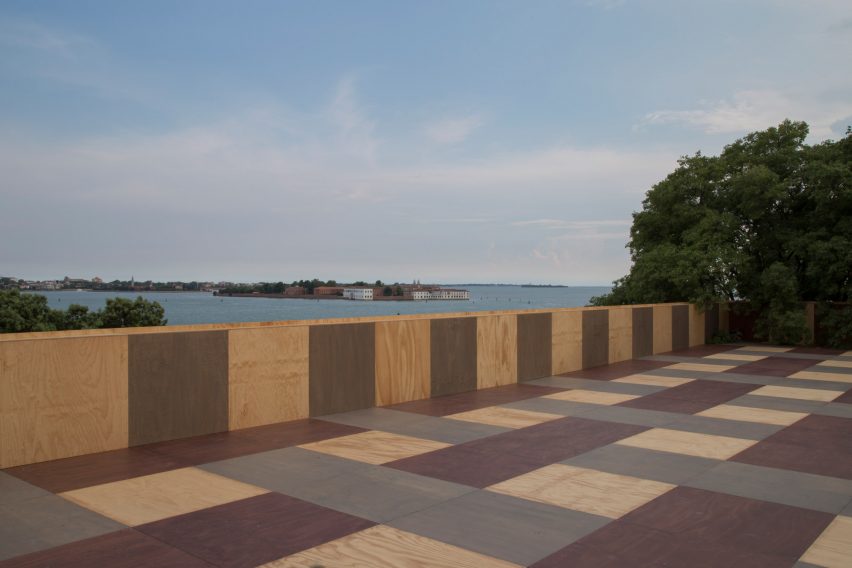
Visitors reach the platform by ascending metal steps that run up alongside the pavilion. But they can also climb the old stone steps and enter the pavilion.
This space inside has been left completely empty. All that remains are traces of exhibitions showcased in the pavilion in previous years.
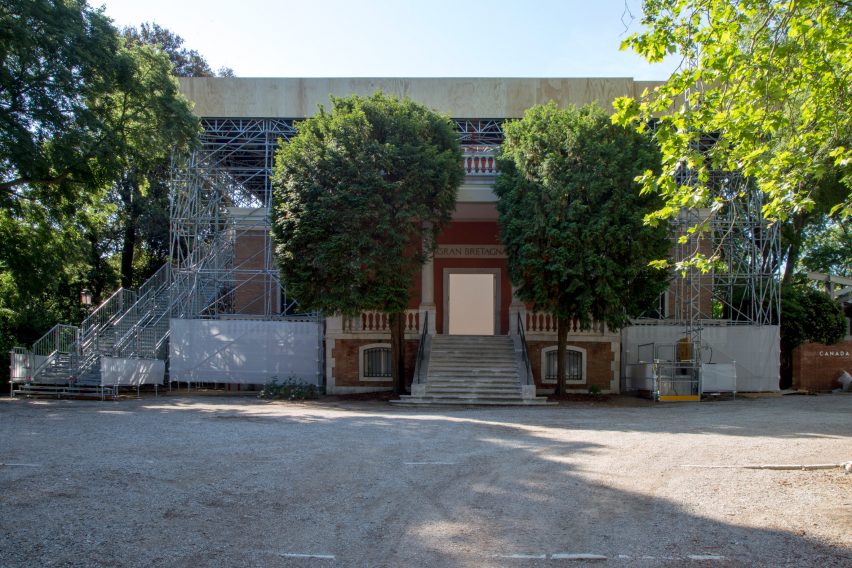
The pavilion officially opened today with a performance by English poet, musician and writer Kate Tempest, whose recent album Let Them Eat Chaos follows the lives of residents of a single street during a storm, against the backdrop of global crisis.
"There were certain themes that I'd been thinking about really and her voice seemed to be a very good way of illustrating them," explained Marcus Taylor.
"There was a certain way that she described people negotiating the architecture of everyday life, coming together. The themes that she was talking about seemed very relevant to this situation."
The programme also includes a performance of La Tempesta by Italian theatre company Teatro in Bottega, which usually performs site-specific plays in shops, prisons and public spaces.
Other countries participating in the Venice Architecture Pavilion have also been invited to host an event at the venue.
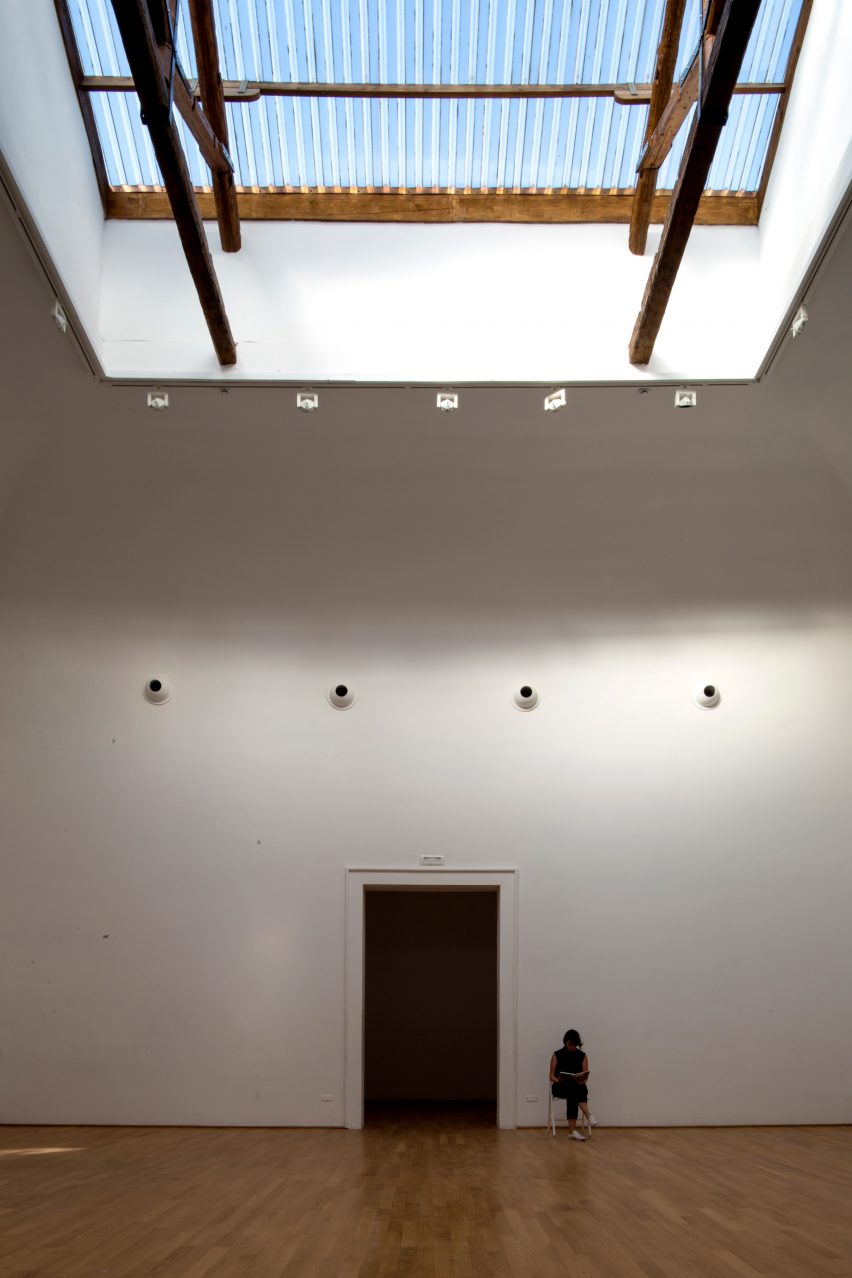
"What I like about our project is that is conceptual. It's an idea and works at a very general level, and it's not something that feels too specific," added St John. "There will be things happening here that we don't have control over and didn't initiate. But we're not very interested in rules."
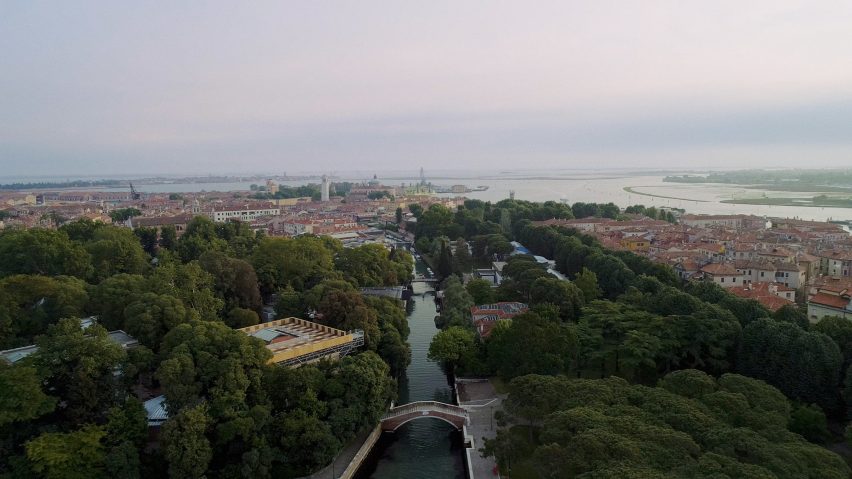
After months of dialogue and entertainment, the platform will be removed and the scaffolding taken down.
"Tt will be returned to exactly how it was before," said St John. "But events will have changed. It will be there as a moment, a response to a moment I think."